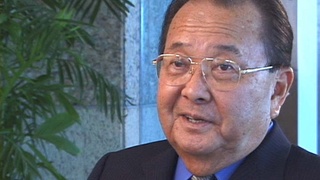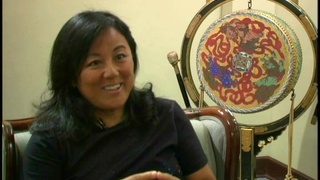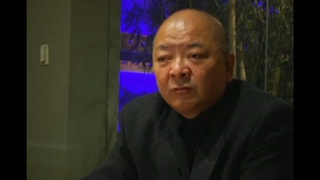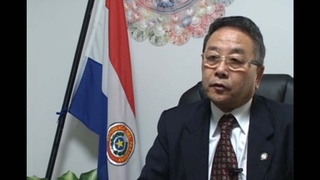Interviews
Hapa as his primary identity
I was born in ’65, I was born two years before the laws went off the books about anti-miscegenation. I was 35 years old before the Census allowed me, for the first time, to check more than one box—that’s ridiculous! Every job application, every school questionnaire was always “pick one” or they give you that “Other” box and ask you to explain. Me and my parents would always write “No! We’re not going to explain!” And to me, it’s like having to choose to be Chinese or “white” as a kid was always this thing like well, it’s like choosing Mom or Dad, and “I guess I like Dad today, and I’ll be white.”
So what happened was, I was told about the word Hapa when I was about four or five. My friends, my cousins from Alhambra, it’s like “Well, you’re Hapa” because they were going to this entirely Chinese American school. “You’re Hapa.” “Okay.” And I didn’t ever really think about it, it was never a big deal to me until I started living in Hawai`i and it’s such a different—it’s such a non-issue in Hawai`i and the awareness is so much greater that I’ll be playing pick-up basketball and people will just say “Hey hapa haole!” you know, they just call you by “Hey, popolo!” It’s just—aware. And so, for me, Hapa was always something that, it just feels like it’s something that makes sense for me. I didn’t like “Amerasian”. I am Asian American, certainly, but I think I’m Hapa first.
Date: May 3, 2006
Location: California, US
Interviewer: Jim Bower
Contributed by: Watase Media Arts Center, Japanese American National Museum.
Explore More Videos

Japanese in Minot
(1928 - 2008) Drafted into both the Japanese Imperial Army and the U.S. Army.


Is non-integration due to the distrust because of what happened in the Second World War? (Spanish)
(b. 1962) Peruvian Poet, Okinawan descendant

I’m a Japanese, Peruvian… who am I? (Spanish)
(b. 1962) Peruvian Poet, Okinawan descendant

Being a Nikkei today (Spanish)
(b. 1962) Peruvian Poet, Okinawan descendant

Histories of immigrants (Spanish)
(b. 1962) Peruvian Poet, Okinawan descendant

The myth of the sacrifice of immigrants (Spanish)
(b. 1962) Peruvian Poet, Okinawan descendant

Paisaje terrestre [Terrestrial landscape] (Spanish)
(b. 1962) Peruvian Poet, Okinawan descendant

Fitting back into American life
(1928 - 2008) Drafted into both the Japanese Imperial Army and the U.S. Army.

Interpretation of Nikkei
(1919-2020) Member of the 1800th Engineering Battalion. Promoted Japan-U.S. trade while working for Honda's export division.

Identity (Japanese)
(1928 - 2008) Drafted into both the Japanese Imperial Army and the U.S. Army.

Integrating As First-Generation Japanese-Peruvian (Japanese)
(b. 1962) Japanese restaurant owner and chef in Peru

Peru Representative vs. Japan Representative (Japanese)
(b. 1962) Japanese restaurant owner and chef in Peru

Thoughts on Japan (Japanese)
(b. 1962) Japanese restaurant owner and chef in Peru

